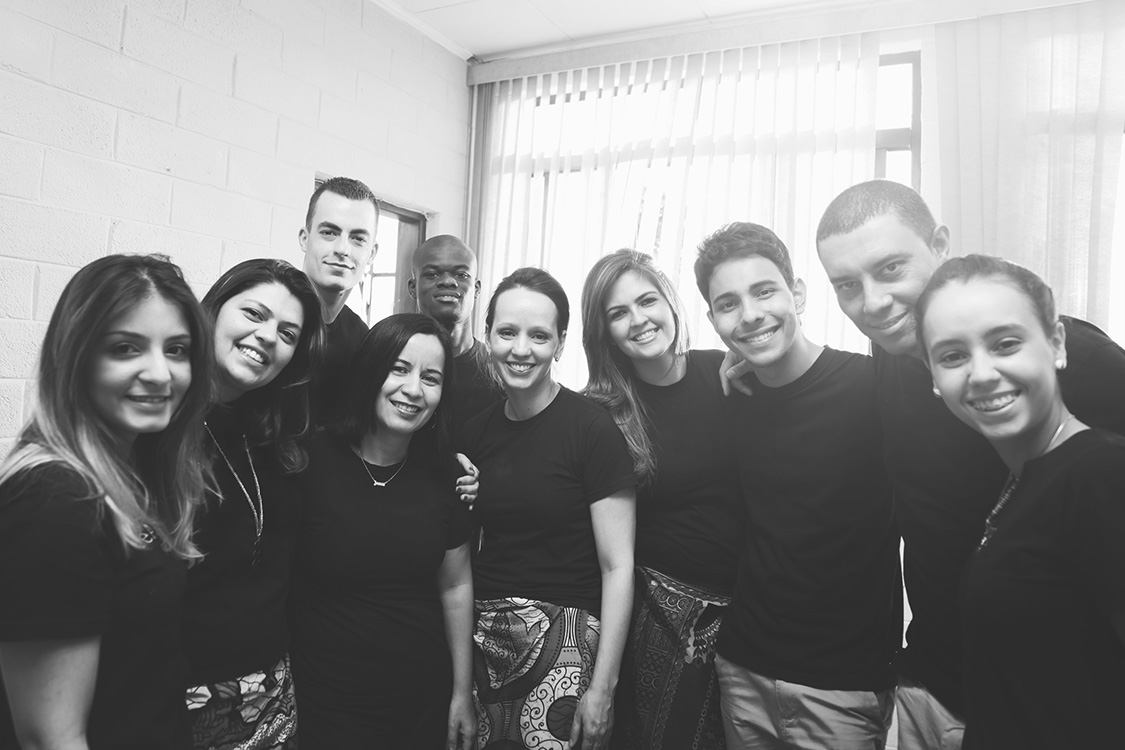
Karen was an innocent teenager in a hallway of a local mega-church heading home after a youth event. Sam, a building manager, pulled her into an empty classroom and forced her to have sex. No one else was around, and she didn’t know what to do, so she just gave in to Sam’s demands. He threatened her so that she wouldn’t tell anyone, but it was hard to hide because she cried the whole rest of the day. Sam had a rap sheet. He had been hired because he had friends who worked for the church, and no one had bothered to check into his past.
Are you surprised? You shouldn’t be. Some churches don’t take the time to check on an employee’s past, like running a criminal background check. But this is the kind of thing that gets churches in trouble and puts them under much greater risk of liability.
The first step in protecting our children is figuring out who is plotting evil against them. Let’s consider two types of sexual predators who try to infiltrate our homes, schools, or churches.
Power predators and persuasion predators
There are two types of sexual predators—the power predator and the persuasion predator.1 Both wreak great havoc in the lives of their victims. Both are problematic for police, parents, and the societies in which they live, and they have very different ways of accomplishing their evil ends.
The power predator takes a child by sheer force. He overtakes his victim by overpowering her and forcing her into captivity. You can think in terms of a child grabbed in a park or a schoolyard, dragged into a car, and driven off without the strength or ability to stop the sexual offender.
Bestselling author and risk assessment expert Gavin de Becker describes it this way: “The power predator charges like a bear, unmistakably committing to his attack. Because of this, he cannot easily retreat and say there was merely a misunderstanding. Accordingly, he strikes only when he feels certain he’ll prevail.”2
Almost twenty-five years ago, Jaycee Dugard was a young girl on her way to the school bus when Phillip Craig Garrido and his wife, Nancy Garrido, abducted her. Nancy had scouted out Jaycee’s path to school, and then one morning, just as Jaycee started walking down the road, the couple drove alongside her. Philip pulled out a stun gun and shocked the girl, and then Nancy pulled her into the back of the car. Phillip would later say to his wife, “I can’t believe we got away with this.”3 For many years after her abduction, Jaycee was a sex slave, locked up in a shed in the backyard of Phillip and Nancy’s home. In just one fleeting moment, Jaycee was robbed of her life and childhood innocence. Enduring several years of rape is a nightmare scenario, but Jaycee stayed alive and eventually escaped.4 Unlike Jaycee, many victims of a power predator are never heard from again.
The persuasion predator uses his personality, charm, and influence to convince others that he is trustworthy, and then at the right time strikes to abuse children. You might think about the illustration of a wolf in sheep’s clothing: the wolf intends to harm others but doesn’t want them to discover his plans, and so he puts on the appearance of an innocent sheep.
A note to pastors and children’s ministers: In church settings we are often less focused on power predators. If you have a good structural setup in your children’s ministry wing (check-in desk, half-doors on classrooms, hall monitors, etc.) and some type of security check-in system, that does a lot to keep the power predator at bay. The persuasion predator is far more likely to infiltrate your church setting.
The myth of stranger danger
One of the most common myths about sexual offenders is that they will be strangers who take away your child. Power predators do exist. They scope out playgrounds or other places with kids to abduct children and steal their lives. Jaycee Dugard knows this reality all too well.
But in church and family settings, our problem is much less often with a stranger than it is with those whose lives regularly intersect with ours: fellow church attenders, child care workers in the nursery, family members, and neighbors—the people we know, not the people we don’t know. Boz Tchividjian, executive director of Godly Response to Abuse in the Christian Environment (GRACE), makes this point: “It is common knowledge that most children are not sexually victimized by strangers. In fact, one study found that only 10 percent of child molesters molest children that they don’t know.”5
Many children are taught from an early age not to talk to strangers. But strangers are not as much of a problem as some who live among us every day. Teaching our children to be wary of strangers can give us a false sense of security. What parents often ignore is the familiar adult who is too friendly with our kids. Consider the following:
- More than 80 percent of the time, victims of child abuse know their abusers.
- Most abuse takes place within the context of an ongoing relationship.
- Some child abusers are married and abuse their own children.6
Most children know how to respond to an unwelcome stranger, but they’re uncertain what to do when a “safe” adult makes them uncomfortable.
What is the typical profile for a sexual predator?
Pretend you’re taking a multiple-choice test. Take a look at the list below and make your best guess at who you think might fit the profile for a sexual offender.
-
A.
A young, single male architect
- Gavin de Becker, from the foreword of Anna Salter, Predators: Pedophiles, Rapists, and Other Sex Offenders: Who They Are, How They Operate, and How We Can Protect Ourselves and Our Children (New York: Perseus Books, 2003), xi.
- Ibid.
- Jaycee Dugard, A Stolen Life: A Memoir (New York: Simon & Schuster, 2011), 9–11. See also Diane Sawyer’s very sobering video interview of Jaycee online at https://www.youtube.com/watch?v=RlI9yl_OE6A.
- Ibid.
- Boz Tchividjian, “5 Things You Should Know About Child Sexual Offenders,” see http://theresurgence.com/2012/04/14/5-things-you-should-know-about-child-sexual-offenders (accessed 2/14/14).
- James Cobble, Richard Hammar, and Steven Klipowicz, Reducing the Risk II: Making Your Church Safe From Child Sexual Abuse (Carol Stream, IL: Church Law & Tax Report, 2003), 12.
- Salter, Predators, 76–78.
B. A “soccer mom” with four children
C. A pediatrician
D. A Catholic priest
E. A public schoolteacher
F. None of the above
G. A and D only
H. All of the above
The correct answer is H. While single males are the most likely, we can’t assume this to be the only type of predator. There are some instances when women get trapped in this perverse sin. Most commonly, one would think of a schoolteacher who is leading teenage boys astray with inappropriate sexual encounters. But there are other categories of female offenders, including some with sadistic tendencies and those who are coerced by a male partner to abuse children.7
In fact, predators come in all types—single and married; blue and white collar; educated and uneducated; rich, middle class, and poor. In examining a range of sexual offender cases, I’ve found examples in almost every category of work—college professor, athletic director of a private school, Catholic priest, doctor, lawyer, pastor, and many other professionals. We can’t limit sexual offenders to just one generic profile.
What should you do?
While there are a lot of recommendations I could make, here are a few thoughts on how to protect our children from sexual offenders.
Be careful of your assumptions. Do not assume you know who is and who is not a sexual offender. Most people falsely think that they would be able to identify a predator—he or she would be a “monster.” Maybe he is a single man? Someone who is disheveled? Maybe he has some kind of evident mental illness or addiction or insanity? He probably is uneducated or some kind of pervert? If you think this way, then predators already have you fooled.
Keep a healthy level of skepticism. As Christians, we are not to live in fear, but to live in confidence in the God of grace who wants good things for His children. Yet, at the same time, we can’t make assumptions about the schools, churches, or other organizations our kids are involved in. A healthy skepticism recognizes that we live in a fallen world where people do evil things against children. For example, take some time to ask the children’s minister at your church what he or she does to protect the children. Does your church do background checks on the folks who work with the children? Does the church have a child protection policy that defines how to create a safe environment? Are there clear sign-in and sign-out procedures? Does the church require at least two adults to be present in kids’ classrooms? Does the church know what to do if a sexual offender shows up? What would the church do if someone is accused of abuse? You might be shocked at how little the children’s minister does to protect the children, or in many cases, you will be delighted at how thoughtful he or she is about creating a firewall of protection around your kids. If there is a lot more work that needs to be done, then resolve to partner with the children’s minister to figure out how to help the children in your church.
Teach the kids to say no. Regarding the idea of stranger danger, one practical thing we can do is teach the children to say no to people who might try to hurt them. Tell the kids that no one (apart from mommy or daddy or a doctor or nurse) is allowed to see the parts of their body covered by a bathing suit. It takes only thirty seconds for a child’s life to be ruined, so get out ahead of the sexual offender and teach the kids to say no.
In a world where sexual predators plot evil against our kids, Christians need to consider what it means to protect children and keep them safe. What steps can you take to prevent sexual offenders from harming the children under your care?
Sign up for your FREE newsletter!
Footnotes:
Original article:
Adapted from On Guard: Preventing and Responding to Child Abuse at Church © 2014 by Deepak Reju. Used by permission of author and New Growth Press. Excerpt may not be reproduced without the express written permission of New Growth Press. To purchase this and other helpful resources, please visit www.newgrowthpress.com.

